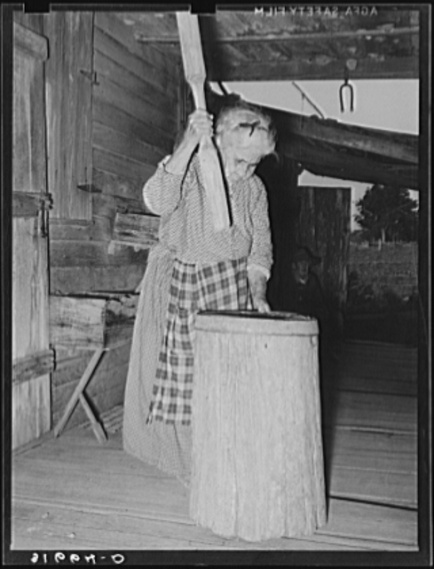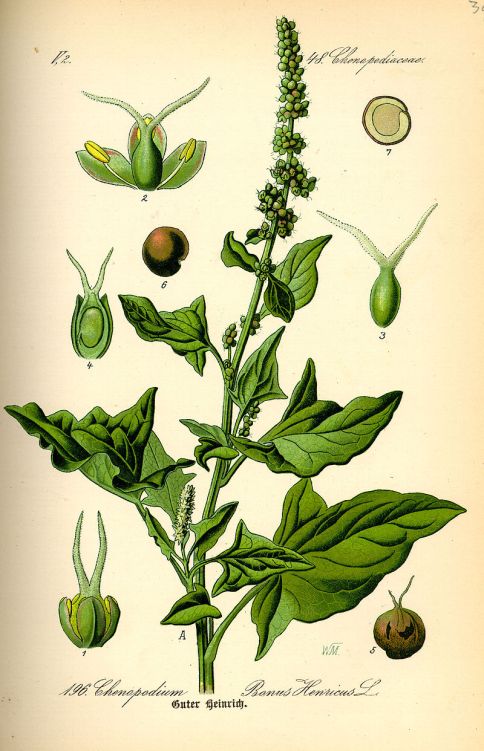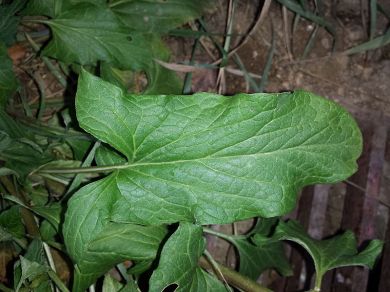
Only save seeds from open-pollinated varieties, hybrids do not carry true from one generation to the next. Only save seed from mature fruit/vegetables. Seed maturity is not the same as market maturity in all produce. To save carrot seed the plant should be a year old and three to four feet tall, whereas seed from a market cantaloupe can be saved.
Seed Savers Exchange offers a primo chart for seed maturity at https://www.seedsavers.org/site/pdf/Seed%20Saving%20Guide_2017.pdf
To insure seed quality be mindful of planting two or more varieties within a close enough distance for them to cross pollinate in which case the fruit produced from those seed won’t produce true.
For very small seed the entire seed head can be tied in a see-through cloth bag of organza which keeps the seeds contained until cut from the plant (purchase or make your own). Bags are helpful for keeping varieties from crossing as well. These bags can be washed and reused many times.
Always clean the seeds of debris before storing in a cool, dark place in an air-tight container, ideally the refrigerator or freezer. It is a good idea to test your seed for germination by placing them between layers of paper towel that are kept well moistened before storing them away.
Separate the seed from any connective matter, in most cases, wash them, then drain well and allow to dry, stirring with the fingers occasionally. When thoroughly dried, put into paper packets/envelopes, write the variety and the year the seeds are harvested on the packet, and place the packets into a sealed container (jar, tightly sealed bowl, vacuum sealed packs).
Small seeds will stick to paper towels becoming difficult to remove after they are dry. Coffee filters work better or place them on the paper towel for only a few minutes to absorb excess water, then spread on a plate or saucer or dry coffee filter to finish drying.
Asparagus varieties may produce large round seed which can be saved to start new plants. This is a slow process, but with free seeds what’s to lose? The seeds will turn from green to red then brown, although they usually fall off the plant before the brown stage. The stem can be put into a seed bag which will allow the seeds to fully mature yet be contained should they fall off on their own then.

Basil seed can be collected using a seed saver bag or by diligently watching the seed heads and snipping them off before the seed begin to separate on their own.
Beans & Peas kept for seed should have brown, dry, and brittle pods. The higher the humidity the greater the chance of mold and mildew spoiling the seeds. In a particularly wet year the plants can be pulled and hung up in a dry place to finish maturing. Sugar snap peas can be left on the vines until they are dried.
Broccoli and brassicas will bolt if left long enough producing multiple seed pods. Each pod contains several seed. The dried pods can be gathered and allowed to dry further before removing the seed from the pod. When the pods reach a certain maturity the seed often fall out on their own, so it is a good idea to lay them on a clean cloth or put them in a paper bag to dry.
Carrots produce seed heads that look like the flowers from Queen Anne’s lace which is, in fact, related. Enclose the seed head in seed saver bags until fully dried. OP varieties: Danvers, Dragon, Oxheart, Paris Market, Red Cored Chantenay, Scarlet Nantes, St. Valery.
 Closeup of carrot flower cluster
Closeup of carrot flower cluster
Cilantro seeds can be used to season food (they are coriander seeds) or used to plant. Often, they will fall on the ground and reseed with no help from gardeners.
Collards are saved like broccoli. OPvarieties: GA Southern, Morris Heading
Corn should dry on the stalk until perfectly dry.
Cucumbers for saving seeds should be allowed to yellow on the vine. Discard any seeds that aren’t plump and harder than the immature seed. OP varieties: Space master, Cucamelon, Sweet Market More, Boston Pickling, Lemon, Chicago Pickling, Japanese Long, Muncher.
Dill seed heads are a familiar sight and smell. To save seed for planting encase the seed head in seed saver bags and leave on the plant until the seed have matured.
Eggplants should be turning brown and the seeds should be hard and crunchy. Leave one or two fruits on the plant while continuing to harvest the others. To collect the seed cut the eggplant in half then break it into small pieces. Cutting can damage the small seed while breaking it up will leave the seeds intact. OP variety: Black Beauty.
 Front left: eggplant seed. The red cayenne pepper is ready for seed harvest, the jalapeno seeds would not be mature yet. The bowl in back contains cucuzza seed.
Front left: eggplant seed. The red cayenne pepper is ready for seed harvest, the jalapeno seeds would not be mature yet. The bowl in back contains cucuzza seed.
Marigold seed can be harvested from flowers that have dried on the plant. Dead-heading will keep the plant flowering longer.
Melons are harvested as normally (when the stem dries, and the melon is easily pulled), and the hard, mature seeds are rinsed, and dried. Melons do not have to mature beyond the eating stage to save seed. Mature seed will sink when dropped into water. Throw away any floaters.
Mustard seeds are saved like broccoli and other brassicas. OP varieties: Southern Giant Curled, Magma, Leaf Heading.
Okra pods should be left on the plant until they are completely dried, then break apart and sort out the seed. If uncertain, watch them until you see the pods begin to split and then harvest the seed.
Onions will produce a round seed head which can be placed inside a seed savers bag and allowed to dry on the plant. When the flower head has dried, and small black seed are visible the seeds can be shaken out onto a clean cloth. “Walking” onions produce a cluster of new “starts” which can be pulled apart and each one planted to produce a new plant.
 Walking onion
Walking onion
Peppers are ready to save for seed when the fruit reaches its final color – for cayenne and jalapeno this is deep bright red. For some bell peppers this can be yellow, orange, etc. Open the pepper, and with your finger, strip out the seed. Either wear gloves or wash hands thoroughly after deseeding hot peppers. What is left after the seeds are removed can be dried and kept for seasoning.
Pumpkin seeds are saved like squash. OP varieties: Small Sugar, Seminole, Amish Pie, Cornfield, Rouge Vif D’Etampes. Long Island Cheese.
Radishes will bolt and form seed pods if left in the ground. Allow the seed pods to thoroughly dry then separate out the seeds. The green pods can be pickled also. OP varieties: China Rose, Watermelon, Spanish Round Black, Spanish Long Black, Early Scarlet Globe, French Breakfast, Philadelphia White Box, White Hailstone, Daikon.
Squash seeds can be saved from summer or winter varieties. Leave summer squash on the vine until they become large with a hard rind. The squash can be stored in a cool dry place for a few days to weeks to allow the seeds to further mature. Seed can be harvested from winter squash, such as Butternut, when picked to cook.
Sunflowers are ready to harvest seeds for planting when the plants have died back, and the backs of the blooms have browned. Cut the stalk about a foot down from the flower head. Place it in a container to catch loose seeds. If you determine a seed head isn’t quite as dry as you thought, just hang it up in a dry place for a week or so to finish drying. OP varieties: Mammoth Russian, Giant Primrose, Irish Eyes, Lemon, Arikara, Autumn Beauty, Valentine, Velvet Queen, etc.
Tomato seed are ready to harvest when the tomatoes are ready to eat. Simply squeeze out the seed. My family dried them at this point, however, for better germination, put the seed and pulp into a jar with about as much water. Cover loosely with a cloth or cheesecloth and allow to sit 2 to 5 days (the process is quicker at higher temps). Pour off the water, drain well and spread out to dry. Note: It is advisable to wash, or allow these seed to ferment, to remove the coating which can reduce germination. Pour off the water, any floating seeds, and any mold that is floating on top. Add fresh water, let the seeds settle, and repeat until the water is clear. Drain well and spread the seeds out to dry.
Zinna seed are easy to harvest from dried flowers. Pull the seed out of the flower and remove the petal from the arrowhead shaped seeds. Allow to dry completely before storing.
Zucchini seed are harvested for planting like squash. Allow to grow very large and the skin to harden. The zucchini can be stored two to three weeks allowing the seeds to mature further before breaking or cutting the zucchini open and scooping out the seed.
As always, I leave you with wishes for Blissful Meals and Happy Gardening. ©




















You must be logged in to post a comment.